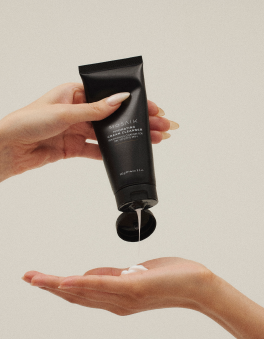Daily cleansing is part of a good skincare regime. Doing so helps to remove impurities such as dirt, excess oil, pollution debris, as well as any unwanted bacteria; leaving the skin feeling clean and refreshed. But how many times should you be washing your face per day? Which products are best for you to use? And what about water temperature? Warm? Hot? Cold? Let’s take a closer look!
Cold Water and Your Skin
Cleansing with cold water has several potential benefits; it may help to reduce inflammation and skin irritation and assist with acne prevention (as colder water helps to regulate oil levels on the skin), leaving the surface feeling cool and refreshed. In contrast, when using hot water, essential oils may be stripped away, causing your skin to produce even more oil (sebum); with the consequence of potential, unwelcome breakouts.
Benefits of Cold Water
Cold water can be especially beneficial for dry or acne-prone skin. If you have chronically dry skin, hot water can strip your sebum levels (oils) and exacerbate the issue, so cold water is a good alternative. Cold water can also be beneficial to your skin when it comes to helping to reduce the appearance of pore size as well as reducing the appearance of puffiness in the face. Remember, hot water opens pores, cold water closes them.
Disadvantages of Cold Water
Of course, there are some disadvantages to using cold water on your face. Since cold water tightens your pores, bacteria and debris can get trapped and therefore will not clear out as effectively as with warm water.
Tip: Try washing your face with lukewarm water first, this way you remove any makeup and pollutants from the day. Then, end with a cold water rinse to tighten pores and promote blood circulation for a healthy glow.
And, What About Warm Water?
Most dermatologists recommend cleansing your face with lukewarm water, the perfect medium for all skin types. Warm water helps to plump and hydrate your skin, making pores appear smaller, while cold water reduces puffiness. Another benefit of washing your face with warm water is that it allows increased absorption of your skincare products!
So, How Often Should You Cleanse?
A good morning cleansing regime is important as we collect an alarming amount of bacteria on our pillowcases while we sleep. A quick cleanse in the morning before you start your day and begin your skincare products routine is key. Cleansing in the morning will also help to reduce the puffiness that is often apparent after we sleep. As we come to the end of our day, a nighttime cleansing regime is essential for getting any makeup and debris from the day off your skin. This being said, you should be cleansing your face twice per day — morning and night. But, be sure to use products that are best suited for your skin type and skin condition. For example, if you tend to normally have dry skin, look for a cream cleanser with added ingredients such as vitamin E. And, if you tend to be more on the oily side, try incorporating a scrub 2x a week.
What’s most important is to decide on the perfect temperature for your skin, and stick with it. Your skin needs routine and consistency; otherwise, you are at risk of unwanted irritations, sensitivities and even potential aggravations to your skin’s protective barrier.













